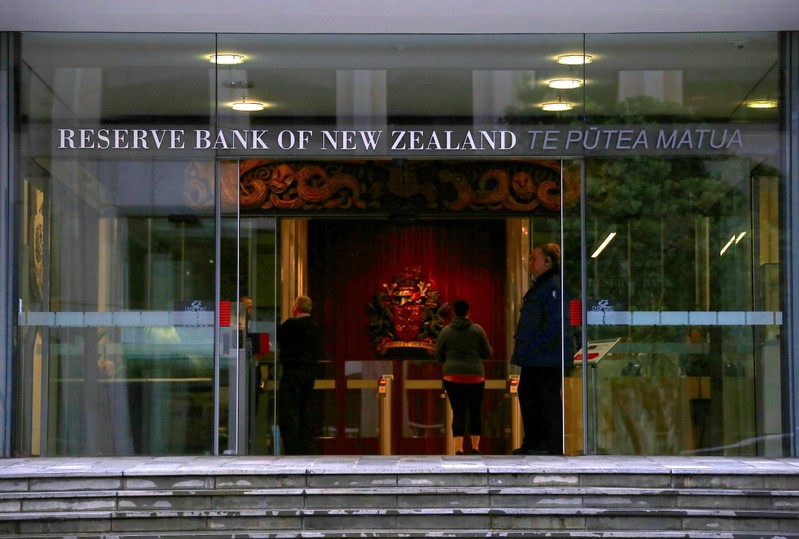
FILE PHOTO: A security guard stands in the main entrance to the Reserve Bank of New Zealand located in central Wellington, New Zealand, July 3, 2017. REUTERS/David Gray
May 8, 2019
By Charlotte Greenfield and Praveen Menon
WELLINGTON (Reuters) – New Zealand’s central bank cut its benchmark interest rate for the first time in two-and-a-half years on Wednesday and signaled a 50-50 chance of another easing, sending the local dollar sharply lower.
The Reserve Bank of New Zealand (RBNZ) lowered the official cash rate (OCR) by 25 basis point to an all-time trough of 1.50 percent, as expected, after switching in March to an explicitly dovish footing on weaker domestic activity and employment headwinds.
The New Zealand dollar stumbled to a six-month low of $0.6525 following the rate decision while government bonds jumped, sending yields 5-7 basis points lower across the curve.
The rate review was the first since the central bank shifted to a new decision model whereby rates are set by a committee of internal RBNZ officials and some external members, not solely by the governor. The committee reached a consensus decision on Wednesday to cut the OCR.
With the easing, the RBNZ joins a slew of other central banks in the region, including neighboring Australia, who have either already cut rates or have signaled a shift to do so to boost growth and lift inflation.
The RBNZ fell short of providing explicit guidance on future moves but said “a lower path for the OCR over the projection period was appropriate.”
The RBNZ’s forecast horizon extends through to June 2022. Rates are seen at 1.36 percent in September and December 2020, implying a more than 50 percent chance of another cut.
“The lower path…is consistent with both inflation and employment remaining near the Committee’s objectives.”
Expectations for a cut had grown in recent months, as New Zealand struggles with weak economic momentum, slowing global growth and inflation falling further below its target.
Labor figures last week showed tepid wage growth and falling employment, while business sentiment has also remained gloomy – all adding to arguments for a rate cut.
The RBNZ said the country’s employment was near its “maximum sustainable level” but the outlook was more subdued with capacity pressure expected to ease slightly this year.
“Consequently, inflationary pressure is projected to rise only slowly,” it added.
The RBNZ pointed to weaker population growth following the country’s center-left government’s efforts to curb immigration along with falling house prices for a slowdown in household spending.
A key downside risk was a larger than anticipated slowdown in global growth, particularly in China and Australia – New Zealand’s largest trading partners, the RBNZ said.
As a result, economists expect rate cuts to remain in play.
“The next move in the OCR will likely be data dependent, we have penciled in August but feel the risks are skewed to a later move,” said ASB chief economist Nick Tuffley.
“The RBNZ’s current OCR outlook suggests a measured assessment before a further cut rather than a sense of urgency.”
(Reporting by Charlotte Greenfield and Praveen Menon in WELLINGTON, Swati Pandey in SYDNEY; Editing by Sam Holmes)

